Showing Spotlights 1441 - 1448 of 2851 in category All (newest first):
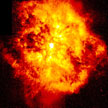 Trace detection of explosives generally involves the collection of vapour or particulate samples and analyzing them using a sensitive sensor system. Various factors, such as wide variety of compounds that can be used as explosives, the vast number of deployment means and the lack of inexpensive sensors providing both high sensitivity and selectivity have made trace detection a very complex and costly task. High sensitivity and selectivity, along with the availability of low-cost sensors, is essential to combat explosives-based terrorism. Nanosensors have the potential to satisfy all the requirements for an effective platform for the trace detection of explosives.
Trace detection of explosives generally involves the collection of vapour or particulate samples and analyzing them using a sensitive sensor system. Various factors, such as wide variety of compounds that can be used as explosives, the vast number of deployment means and the lack of inexpensive sensors providing both high sensitivity and selectivity have made trace detection a very complex and costly task. High sensitivity and selectivity, along with the availability of low-cost sensors, is essential to combat explosives-based terrorism. Nanosensors have the potential to satisfy all the requirements for an effective platform for the trace detection of explosives.
Jan 28th, 2013
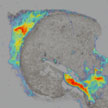 Currently, optically absorbing nanoparticles are breaking into clinical medicine because of their ability to aid in the identification of disease with several medical imaging modalities. These nanoparticles are also used in therapeutics by triggering drug release or enhancing ablation of diseased tissues, while minimizing damage to healthy tissues. The efficiency and effectiveness of the medical imaging and therapeutics using nanoparticles depends on the ability to selectively target them to the specific tissues. A novel method only uses properties of the nanoparticles and therefore are independent of the amount of nanoparticles that reaches the target location.
Currently, optically absorbing nanoparticles are breaking into clinical medicine because of their ability to aid in the identification of disease with several medical imaging modalities. These nanoparticles are also used in therapeutics by triggering drug release or enhancing ablation of diseased tissues, while minimizing damage to healthy tissues. The efficiency and effectiveness of the medical imaging and therapeutics using nanoparticles depends on the ability to selectively target them to the specific tissues. A novel method only uses properties of the nanoparticles and therefore are independent of the amount of nanoparticles that reaches the target location.
Jan 25th, 2013
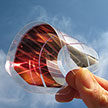 Many researchers are investigating the development of flexible solar cells in hopes of improving efficiency and lowering manufacturing costs. As an important member of the organic photovoltaics family, polymer solar cells draw the most research interest, due to the relatively high power conversion efficiency achieved. However, compared to the high efficiencies of inorganic solar cells, the best polymer solar cells still show a lower efficiency. Improved nanomorphology is seen as key to improving the efficiency of organic solar cells. One particular nanotechnology approach would use nanoimprint lithography to produce precisely nanostructured devices rather than using chemical methods of manufacturing.
Many researchers are investigating the development of flexible solar cells in hopes of improving efficiency and lowering manufacturing costs. As an important member of the organic photovoltaics family, polymer solar cells draw the most research interest, due to the relatively high power conversion efficiency achieved. However, compared to the high efficiencies of inorganic solar cells, the best polymer solar cells still show a lower efficiency. Improved nanomorphology is seen as key to improving the efficiency of organic solar cells. One particular nanotechnology approach would use nanoimprint lithography to produce precisely nanostructured devices rather than using chemical methods of manufacturing.
Jan 24th, 2013
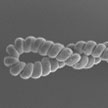 Materials engineers are keen to exploit the outstanding mechanical properties of carbon nanotubes (CNTs) for applications in fibers, composites, fabrics and other larger-scale structures and devices. The ability to fabricate continuous, multifunctional yarns represents an important step in this direction. The development of a continuous, weavable multilayered CNT yarn with superior mechanical, structural, surface, and electrical properties would open the way for a wide range of structural and functional applications, including composites, intelligent fabrics, catalyst supports, and sensors. Researchers in China have now found that carbon nanotubes can be self-assembled into a stable double-helix structure by a controlled over-twisting process, and this novel structure has unique mechanical properties.
Materials engineers are keen to exploit the outstanding mechanical properties of carbon nanotubes (CNTs) for applications in fibers, composites, fabrics and other larger-scale structures and devices. The ability to fabricate continuous, multifunctional yarns represents an important step in this direction. The development of a continuous, weavable multilayered CNT yarn with superior mechanical, structural, surface, and electrical properties would open the way for a wide range of structural and functional applications, including composites, intelligent fabrics, catalyst supports, and sensors. Researchers in China have now found that carbon nanotubes can be self-assembled into a stable double-helix structure by a controlled over-twisting process, and this novel structure has unique mechanical properties.
Jan 22nd, 2013
 The media play an important role in the formation of society's opinion by drawing attention to selected topics and bringing them closer to the public. This applies in particular to areas with which a large percentage of the population would otherwise have no direct points of contact, such as nanotechnology. A new study of selected print media in the German-speaking countries now reveals the general picture of nanotechnology in the media, what topics are given significant treatment, which actors are consulted, and explains that (at least as yet) there is no need for any concerns about risk-centred controversial reporting on this technology.
The media play an important role in the formation of society's opinion by drawing attention to selected topics and bringing them closer to the public. This applies in particular to areas with which a large percentage of the population would otherwise have no direct points of contact, such as nanotechnology. A new study of selected print media in the German-speaking countries now reveals the general picture of nanotechnology in the media, what topics are given significant treatment, which actors are consulted, and explains that (at least as yet) there is no need for any concerns about risk-centred controversial reporting on this technology.
Jan 21st, 2013
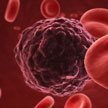 The majority of current commercial applications of nanotechnology to medicine is geared towards drug delivery to enable new modes of action, as well as better targeting and bioavailability of existing medicinal substances. While most reviews on nanomedicine tend to focus on specific sectors or take a very forward-looking stance and fail to provide a complete perspective on the current landscape, a new review article provides a more comprehensive and contemporary inventory of nanomedicine products.
The majority of current commercial applications of nanotechnology to medicine is geared towards drug delivery to enable new modes of action, as well as better targeting and bioavailability of existing medicinal substances. While most reviews on nanomedicine tend to focus on specific sectors or take a very forward-looking stance and fail to provide a complete perspective on the current landscape, a new review article provides a more comprehensive and contemporary inventory of nanomedicine products.
Jan 17th, 2013
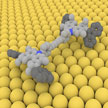 Designing, building, and running molecule-sized nanocars has become an active field of research among nanotechnology scientists. Based on research to reinvent the wheel for nanotechnology, efforts range from the original nano car developed by James Tour at Rice University in 2005 - which had buckyball wheels and flexible axles, and served as a proof-of-concept for the manufacture of machines at the nanoscale - to 'nanodragsters', and a nano car with molecular 4-wheel drive. A new Perspective article in ACS Nano describes how this field began, its growth, and list problems to be solved.
Designing, building, and running molecule-sized nanocars has become an active field of research among nanotechnology scientists. Based on research to reinvent the wheel for nanotechnology, efforts range from the original nano car developed by James Tour at Rice University in 2005 - which had buckyball wheels and flexible axles, and served as a proof-of-concept for the manufacture of machines at the nanoscale - to 'nanodragsters', and a nano car with molecular 4-wheel drive. A new Perspective article in ACS Nano describes how this field began, its growth, and list problems to be solved.
Jan 15th, 2013
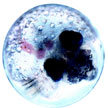 To date, the predominant focus of the nanotechnology risk research endeavor has been defining the fate, transport, and toxic properties of pristine or "as manufactured" nanomaterials. However, the high surface to volume ratio and reactivity of nanoparticles makes them highly dynamic in environmental systems. The resulting transformations of the nanomaterials will affect their fate, transport, and toxic properties. A recent review summarizes what is known about chemical, physical, and biologically mediated transformations of nanomaterials in natural systems and their effects on the resulting nanomaterial behavior.
To date, the predominant focus of the nanotechnology risk research endeavor has been defining the fate, transport, and toxic properties of pristine or "as manufactured" nanomaterials. However, the high surface to volume ratio and reactivity of nanoparticles makes them highly dynamic in environmental systems. The resulting transformations of the nanomaterials will affect their fate, transport, and toxic properties. A recent review summarizes what is known about chemical, physical, and biologically mediated transformations of nanomaterials in natural systems and their effects on the resulting nanomaterial behavior.
Jan 10th, 2013
 Trace detection of explosives generally involves the collection of vapour or particulate samples and analyzing them using a sensitive sensor system. Various factors, such as wide variety of compounds that can be used as explosives, the vast number of deployment means and the lack of inexpensive sensors providing both high sensitivity and selectivity have made trace detection a very complex and costly task. High sensitivity and selectivity, along with the availability of low-cost sensors, is essential to combat explosives-based terrorism. Nanosensors have the potential to satisfy all the requirements for an effective platform for the trace detection of explosives.
Trace detection of explosives generally involves the collection of vapour or particulate samples and analyzing them using a sensitive sensor system. Various factors, such as wide variety of compounds that can be used as explosives, the vast number of deployment means and the lack of inexpensive sensors providing both high sensitivity and selectivity have made trace detection a very complex and costly task. High sensitivity and selectivity, along with the availability of low-cost sensors, is essential to combat explosives-based terrorism. Nanosensors have the potential to satisfy all the requirements for an effective platform for the trace detection of explosives.
 Subscribe to our Nanotechnology Spotlight feed
Subscribe to our Nanotechnology Spotlight feed





